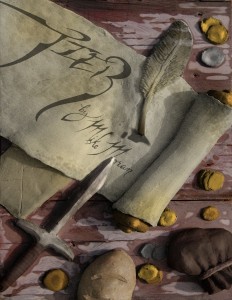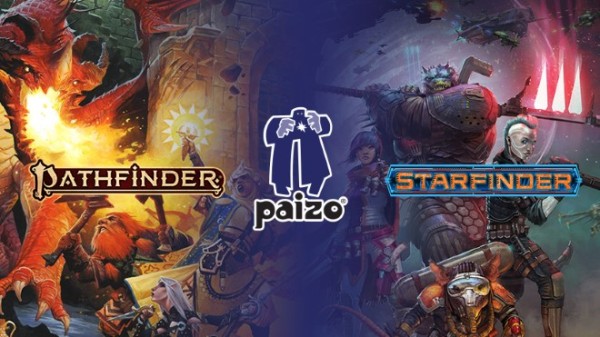TIER: The Enhanced Role Playing Game
TIER: The Enhanced Role Playing Game is a complete rules system based on the D20 OGL and D&D 3.5 Rules set written and published by Michael Moran.
By Cape Rust

Learn more about TIER: The Enhanced Role Playing Game here
Purchase TIER: The Enhanced Role Playing Game here
Written and play tested for four years, TIER touts itself as a streamlined, classless game system. Tier only uses a single d20 for rolls to increase the pace of combat. These and several other features should appeal to fans of the D&D 3.5 style of game play.
CONTENT
TIER is a 412-page book that has almost everything you need to play the game. I say almost because there are several products that while free, must be obtained on the TIER web site. This book is full of crunch, there is very little fluff in these pages.
OVERALL
I am a fan of the D&D 3.5 style of play, so the concept of this book appealed to me from the start. As I started to read the rules and the concepts I started to see TIER as a D&D like system that included some really good house rules. If some people call Pathfinder D&D 3.75, then Tier is D&D 3.60 to 3.70.
RATINGS
Publication Quality: 6 out of 10
Starting from the outside and working our way in. The cover for this game is bad, I mean really bad. While the font used looks cool, it is hard to read. With a new game system like this, people need to be able to clearly read the title and the author. Tier has not established its brand and this cover is not a good start. The art looked like a really badly colored clay sculpture. It evoked exactly zero feelings of desire. If it had been the cover of a children’s fantasy coloring book it might have worked, but as is, it does the system no justice. I understand art budget constraints, but a high school art student could do a better job than this. The inside front page print looks much better and should have been used on the cover.
Most of the art in this book was marginal at best. Several of the race pictures and monsters looked like cheap computer generated counters. My review copy was digital and the coloring in most of the pictures actually made a bad thing worse. There are tons of charts and some of them straddled two pages. Charts should only be on one page whenever possible. Because of the amount of charts and the length of some of them, there should be something placed in the charts to make them easier to read (line breaks, different color or font text, something…). An example of the character sheet should have been presented earlier in the book and the character sheet was sub-par. The actual placement and order of most of the content made sense, but I could have used a separation between the rules and character creation.
Mechanics: 8 out of 10
I really like some of the changes the developers of this game made. Several of the rules they introduce are similar to house rules that my gaming group has used for years. I think they should have followed Pathfinder and adopted perception checks rather than separate spot and listen checks. When the whole concept behind your game is to streamline things, this seems like a no brainer. The single d20 mechanic answers the mail as far as speeding up combat, but for many gamers their large dice sack with varied dice is a fundamental part of the tabletop experience. I like the way the single d20 system works in this case, but I don’t see it becoming a widespread thing. The TIER approach really stands out as you get to higher levels of play. Because it is streamlined, high-level combat feels more like mid-level combat in D&D 3.5. All of the numbers crunching needed to execute high-level 3.5 combat is one of the reason I avoid higher level games, the TIER approach makes me want to run a higher level game. Because there are no classes the player has much more flexibility which is great, the introduction of masteries which, in my view, are a combination of class features and feats, works really well. I would like to see this concept used in more games or a more lengthy discussion of how it could easily be implemented into existing games.
Desire to Play: 9 out of 10
412 pages is a hefty amount of information and if you are a fan of the D&D 3.5 style of play this book might be a 10 for you. Some of the rules changes or modifications make it difficult to integrate into an existing game, but far from impossible. This book takes the place of the three traditional core rulebooks that we have come to know, which is a good thing. This system is designed to take characters into high-level play which has the added value of cutting out the cost of some additional books. If you are looking for setting information, this book lacks it and thus the 9.
Overall: 8 out of 10
There are quite a few great concepts in the TIER system and there are a few spots where more could have been done. This product shouldn’t be overlooked because of the dismal artwork as the content is solid. I was disappointed that all of the spell lists still had class names associated with them. I don’t know if this is required by the OGL, but for a classless system, I saw wizard, druid and cleric quite a bit. I will stick to my original assessment that this system feels like house rules tacked onto D&D 3.5, but I think that just shows the love and dedication put into the extensive development of the game. I love the classless system as it allowed me to make the character I wanted to make, not yet another cookie cutter (insert class here). The masteries concept is great, it really trimmed off some of the feat fat that has bugged me for years. It is important to try products like this because products like TIER don’t try to reinvent the wheel, they just try to make it work better. Check TIER out and even if you don’t completely switch over to its system, there is a lot of goodness in this product.


